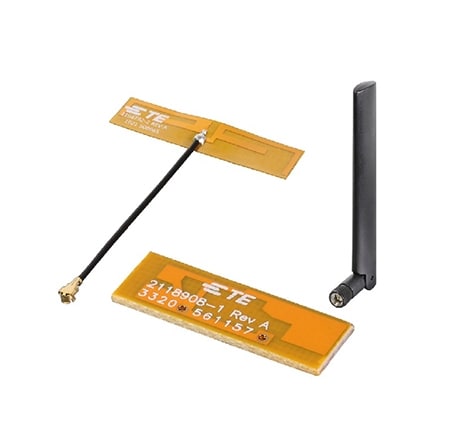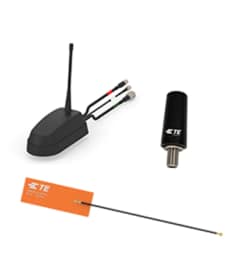Leveraging decades of experience designing for complex applications, our comprehensive antenna portfolio provides advanced solutions accommodating a broad range of frequency bands for operation on many networks across global and regional markets. Learn how our standard antennas enable the Internet of Things (IoT).

Comprehensive portfolio to address your Wi-Fi needs
Wi-Fi antennas provide connectivity solutions primarily for three common unlicensed frequencies bands which are assigned to the Wi-Fi spectrum: 2.4, 5.5, and 6 GHz. Wi-Fi antennas come in many shapes and sizes. Examples of omnidirectional antennas include internal/embedded, Laser Direct Structured (LDS), outdoor antennas, ceiling mount antennas, and rubber duck/dipole antennas. Types of directional Wi-Fi antennas include Yagi antennas, mini panel antennas, panel antennas, and parabolic dish antennas.
Recent developments in Wi-Fi have included the introduction of Wi-Fi 6 and Wi-Fi 6E, which is the first expansion of the available frequencies in decades. Enhanced security protocols have also recently been developed. Wi-Fi 7 is currently being discussed for imminent launch.
The two most common types of Wi-Fi antenna are omnidirectional (360° coverage) and directional (focused beam). Omnidirectional antennas provide 360° signal coverage around the antenna. This provides coverage all around the antenna but has a shorter range than a directional antenna.
Directional Wi-Fi antennas channel all their power in one direction. These can send and receive a wireless signal from a further distance but at a more focused coverage area. These antennas are often used for long range point-to-point Wi-Fi networks to connect between buildings, or for long-range point-to-multipoint Wi-Fi networks that have more than one directional antenna connecting with an omnidirectional antenna.
Antennas for Wi-Fi can be single band solutions that cover 2.4, 5.5, or 6 GHz. A second common option is dual-band 2.4 and 5.5 GHz that is included in one antenna with either a wideband and single port antenna or with a multi-port solution with a dedicated port for each frequency. More recent antennas will provide coverage of all three bands - 2.4, 5.5 and 6 GHz in order to meet the requirements of Wi-Fi 6E. Again, this coverage can be a single port and wideband antenna or a multi-port antenna solution.
In addition to the common or global 2.4, 5.5, and 6 GHz frequency bands, there are other bands such as the 860/960 MHz, 3.65 GHz, and 4.9 – 5.0 GHz, which vary by country/region, or in some cases the licensing of the frequency band.
Featured Products
Wi-Fi 6E Antennas
We offer a large portfolio of Wi-Fi 6E capable antennas for use in the flexible 2.4 GHz, 5 GHz, and 6 GHz ISM frequency bands. With a broad selection of Wi-Fi 6E antennas, TE has the right antenna for your wireless applications.
Lockers to phones, electric vehicles to chargers, hearts to doctors—IoT connects anything to everything. TE is expanding that connection on a global scale with stronger, more reliable connectivity solutions. Together, let’s drive towards a more connected future of everything.
Technology continues to get smaller and smarter. As more devices join networks, you’ll need the support to progress your Wi-Fi to the next stage of evolution: Wi-Fi 7. TE is your behind-the-scenes partner with decades of manufacturing experience, constantly advancing standard antennas that enable every new phase in wireless connectivity. Together, we can engineer new possibilities for the future of Wi-Fi connection.





